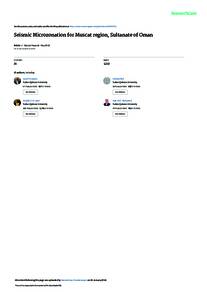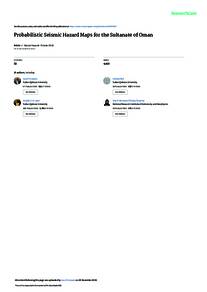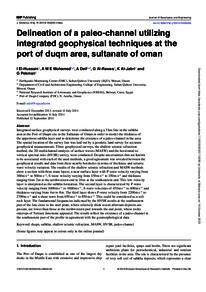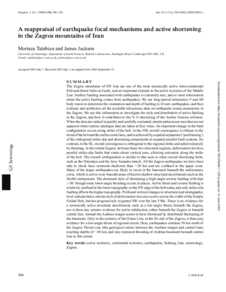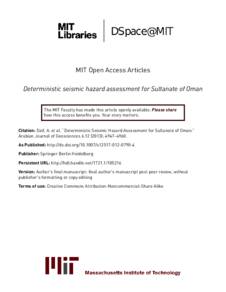Document
Seismic microzonation for Muscat region, Sultanate of Oman.
Identifier
DOI: 10.1007/s11069-013-0785-9
Contributors
Deif, A., Author
Al-Jabri, K., Author
Mohamed, A. M. E., Author
Al-Rawas, G., Author
Toksoz, M. N., Author
Sundararajan, N., Author
El-Hady, S., Author
Al-Hashmi, S., Author
Al-Toubi, K., Author
Al-Saif, M., Author
Al-Habsi, Z., Author
Publisher
Elsevier B. V.
Gregorian
2013-07
Language
English
English abstract
Site characterization was carried out for Muscat region using the ambient noise measurements applying the horizontal-to-vertical spectral ratio (HVSR) technique and using active seismic survey utilizing the multichannel analysis of surface waves (MASW) of survey data. Microtremors measurements were carried out at 459 sites using short-period sensors. This extensive survey allowed the fundamental resonance frequency of the soft soil to be mapped and areas prone to site amplification to be identified. The results indicate a progressive decrease in the fundamental resonance frequencies from the southern and eastern parts, where the bedrock outcrops, toward the northern coast where a thickness of sedimentary cover is present. Shear wave velocity (Vs) was evaluated using the 2-D MASW at carefully selected 99 representative sites in Muscat. These 99 sites were investigated with survey lines of 52 m length. 1-D and interpolated 2-D profiles were generated up to a depth range 20-40 m. The vertical Vs soundings were used in the SHAKE91 software in combination with suitable seismic input strong motion records to obtain the soil effect. Most of the study area has amplification values less than 2.0 for all the considered spectral periods. The estimated fundamental frequencies obtained using the H/V spectral ratio method and using SHAKE91 are found to be in a relatively good agreement. Maps of spectral amplification, earthquake characteristics on the ground surface for peak ground and spectral accelerations at 0.1, 0.2, 0.3, 1.0, and 2.0 s, for 475 years return period are produced. The surface ground motion maps show that the hazard level is moderate with expected PGA in the range 0.059-0.145 g for 475 years return period.
Member of
ISSN
0921-030X
Resource URL
Category
Journal articles

